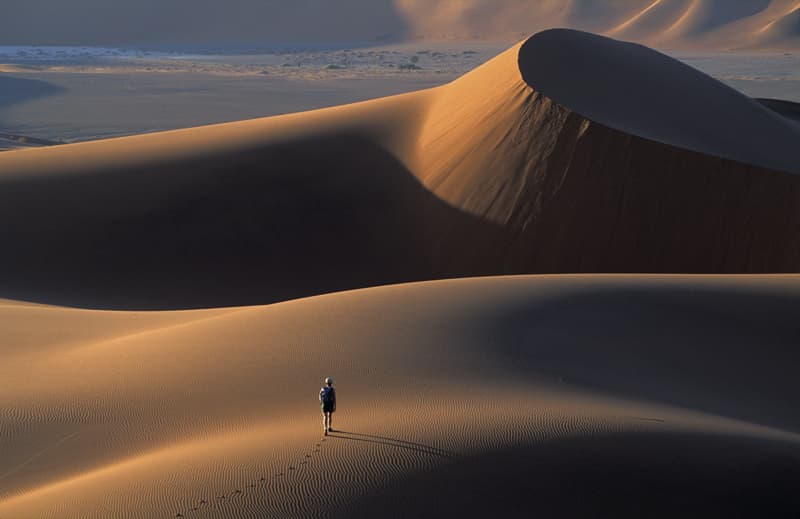Photo Insight with David Noton
 One of the foremost travel and landscape photographers working today, David Noton tirelessly travels the world in search of new challenges, which he shares with you here
One of the foremost travel and landscape photographers working today, David Noton tirelessly travels the world in search of new challenges, which he shares with you here
I took this image during a six-week trip to southern Africa. It was shot in the late 1990s, I believe, and has been reproduced all over the world. One year it was used on the front page of The Sunday Times travel section. There was a feature on adventure holidays inside the supplement and this picture summed it up perfectly. I think the image says something about solitude and adventure, travelling and departure – going into the unknown as an intrepid explorer. Perhaps this is part of its enduring appeal.
We’d started our trip in Cape Town in South Africa and spent a few weeks in the Namib Desert, where this image was taken, followed by the Etosha National Park in Namibia, and then on to Zimbabwe. The figure in the image is my wife, Wendy. We had found this location the previous day and planned to go back there early the following morning. It’s quite a task getting there for first light as it’s about an hour and a half drive into the desert in darkness and then a hike up the sand dunes. But being there for the first light of day makes it all worthwhile. The beautiful early morning light accentuates the wonderful sensual curves of the sand dunes. The side lighting really is quite breathtaking.
I was standing on a sand dune looking down onto the landscape below, and had my Nikon F5 camera with a 70-200mm lens mounted on a tripod. I remember I tried using different focal lengths, but settled on a mid-range focal length – possibly around 135mm. I like the longer lens perspective and how this cuts out the sky. In doing so, it accentuates the simple shapes of the sand dunes. I also like the slightly compressed perspective of the dune in the middle distance.

I was photographing the view and Wendy commented how she wanted to run into the landscape. My reply was, ‘Hang on!’ I got the shots I thought I wanted and then said, ‘Go on then’. As soon as Wendy started walking into the frame, I realised the image was far stronger with a figure included. You get a sense of the scale of the desert – man versus nature, a tiny figure in the grand scheme of things. I sometimes find that positioning a figure in the ‘right’ place in a landscape image can really lift the picture. This is certainly one of those occasions.
I love photographing deserts because they are such elemental landscapes. I’m sure you could tire of them, but coming from lush, green England I find them very inspirational. They’re austere but starkly beautiful at the same time. I’ve visited several deserts around the world and they’re all different. The Namib Desert has the biggest sand dunes in the world. If you go to the Atacama Desert in Chile, which is the driest desert in the world, the landscape is very rocky, but it is beautiful in its own right.
Creating a compelling composition in the desert is largely about timing. You have perhaps half an hour when the sun is first up, which is a key time, and also in the evening when the light carves wonderful shapes from the sand dunes. This sort of landscape is all about shape, created by the interplay between light and shadow. Creating a careful balance between the two is key. It is a case of looking at the scene and thinking about how it might look during the first light of day.
As I’ve said in previous articles, I would rather photograph a scene with the aim of creating one great picture than take a few pictures here and there and not really come away with anything memorable. One of the beautiful things about photographing in the desert is that the landscapes are very transient. The sand dunes are moving all the time, being shaped and reshaped – the shifting sands of time. Consequently, this sort of picture can never be repeated and that is a notion I like very much.
David Noton was speaking to Gemma Padley
 David’s new book
David’s new book
Full Frame, priced £25 and published by David & Charles, is now
available. It follows David’s journey to ten different locations around
the world and gives invaluable insight into his approach and working
methods. To see more images by David visit www.davidnoton.com







